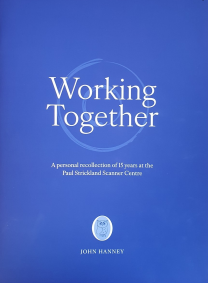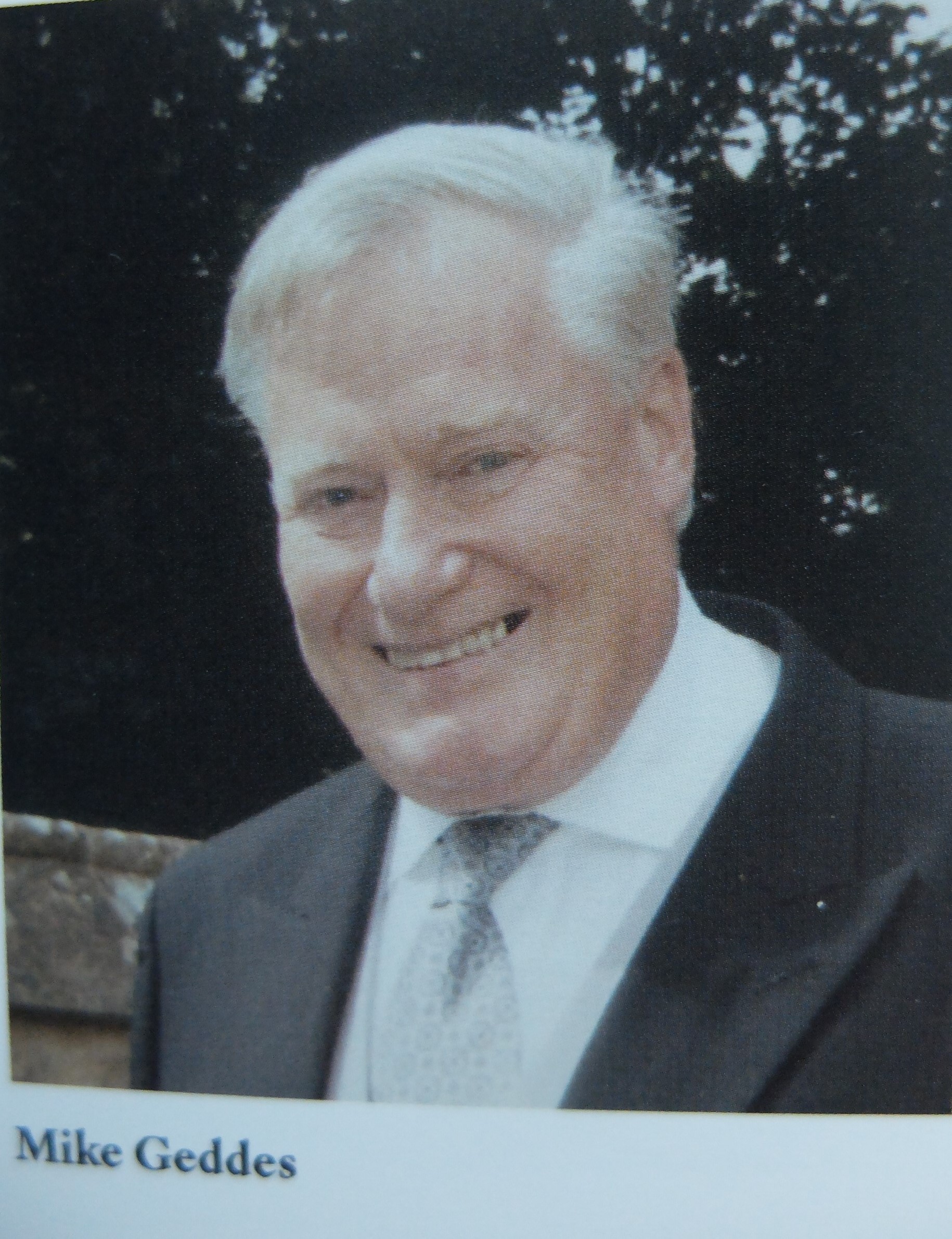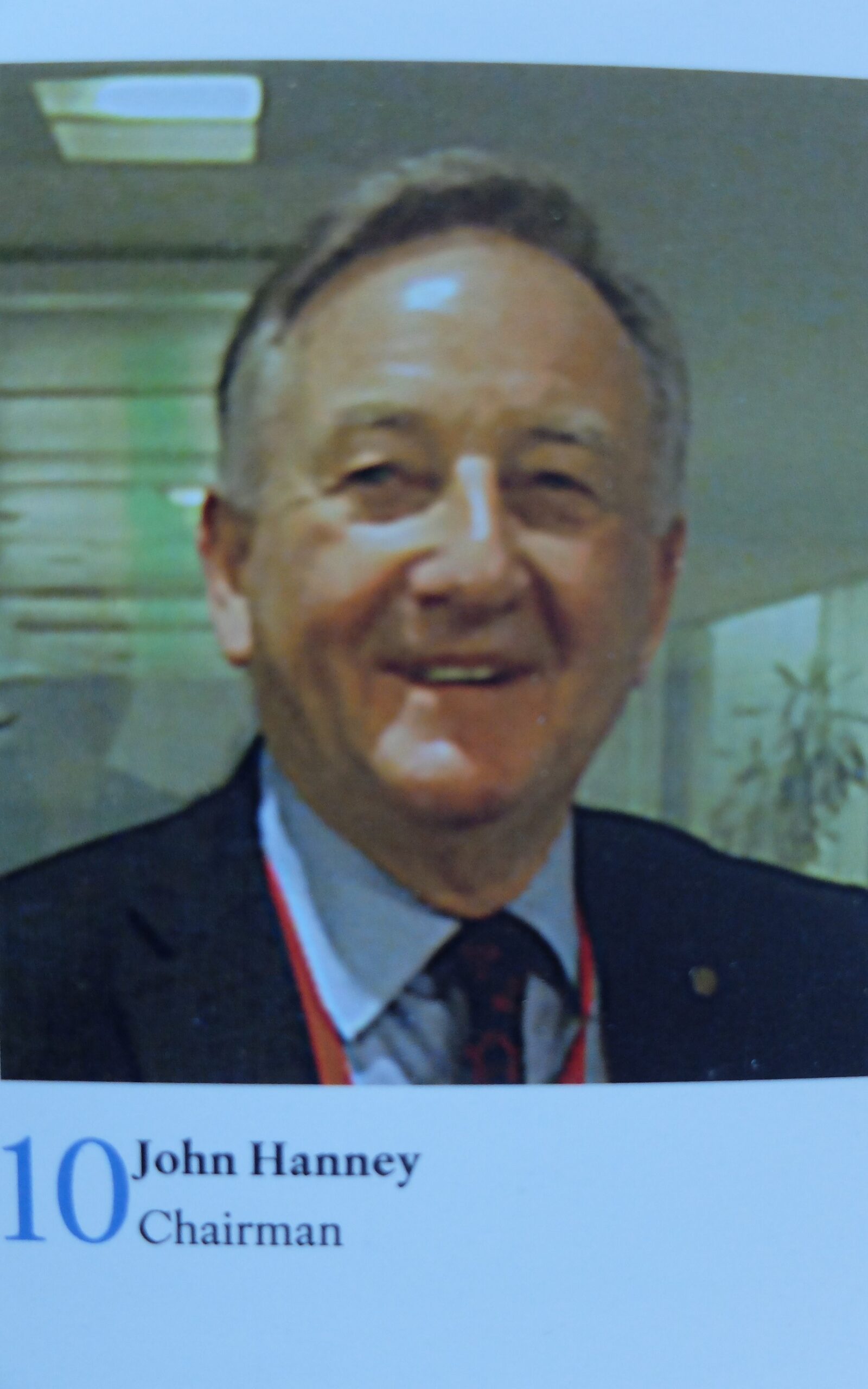
John Hanney’s (S50-55) new book Working Together, documents the history of the Paul Strickland Scanner Centre. John said: “I really enjoyed serving on the Board, first as a trustee and later as the chairman. I visited the centre at least twice a month and it was clear that it was one big family, with all the staff getting on very well. There was such a nice atmosphere. It was hugely satisfying to see how the centre was developing, with the number of scans growing from about 5,000 per year using two scanners in the late 90s to about 17,000 using 5 scanners when I retired from the Board. It’s a story worth telling.”
John has produced the book at his own expense. He would like to print further copies to help raise money for the centre and is asking anyone who is interested in the book to register their interest by indicating this on the accompanying donation form or by emailing appeals@stricklandscanner.org.uk
BOOK REVIEW BY James Ruddock-Broyd (G46-52) – December 2024
John Hanney (S50-55) became a Trustee of the Paul Strickland Scanner Centre near Watford in 1995 and chaired that body from 1998 until he retired from the Centre in 2010. He has written “Working Together” which is the Centre’s history from 1986 which is published in A4 format on stiff quality paper.
The 19 pages of narrative have two or more coloured pictures on each page; four pages have facsimiles of letters, one of which is from the then Queen sending good wishes for the fundraising Charity Ball at the Science Museum in 2006 organised by Moor Patk Lions Club and one from the Duchess of Kent, commending the book, who opened the Centre and attended its 30th Anniversary in 2015.
The founder of the Centre was Dr Paul Strickland OBE, MB, BS, FRCR, FRCP, a cancer specialist whom John met on a medical legal case some time ago. Dr Paul was Director of the now Mount Vernon Cancer Centre and it was on that hospital site that the Strickland Centre was built.
An appeal was launched in 1983 and the first scanner was a CT one (Computerised Tomography) and an MRI scanner was purchased later.
Richard Baker OBE cut the turf and George Michael has been a major donor and opened the Cyclotron Building in 2003; other fundraising has included being done through Golf Days. The Centre is a charity and the major part of its work is for NHS under contract on a low profit basis and later it has performed PET scanning. In the early days it carried out some 5,000 scans a year for patients and in the 2020s that figure has reached 17,000.
John records some of his work for the Centre which included visiting Hadassah University Hospital in Israel and later a school friend Mike Geddes (S51-55) became Marketing Manager in 2002.
The book is of admirable quality but there is just one ‘niggler’ early on: the opening portrait is strangely of Sir Peter Mansfield who has no further comment whereas you would expect it to be of Dr Strickland. The page numbers position is a novelty: they are beside the columns half-way down the page and that does give them a prominent place as such are often not easy to see quickly in many books.
The caption to Sir Peter on page 3 says he “invented the amazing Magnetic Resonance Imaging (MRI) scanner.” This has prompted some research which is convenient to air in this review. Our village neighbour in Witney, Sir George Radda, was always thought to be that person. It has now become apparent that two teams were researching the same thing in different universities: Sir Peter at Nottingham whose team is said to have worked on an individual basis and Sir George at Oxford as Professor of Biochemistry where they worked in a collaborative manner.
Sir George pioneered the discovery of NMR and produced the first paper on it in 1974. As the “N” stood for ‘nuclear’ which generally denotes ‘war’ that was dropped and the initials became MRI. Sir Peter as a physicist is recorded as inventing ‘slice selection’ for MRI and development of an MRI protocol. The main initial exercises for all this was going on in the 1970s.
Sir Peter and a colleague jointly received the top Nobel Prize in 2003 as well as other awards and died in 2017. Sir George ultimately received 16 awards and titles and 31 Honours and died in September 2024; he had escaped The Uprising in Hungary in 1956 without a penny to his name and knew no English.
The book is a well-worth read of a comprehensive survey of the progression of scanning for early detection of cancer and it shows how a registered charity can be run by dedicated and efficient management.



Comments
Join the conversation
Log in to add your comment
0 comments